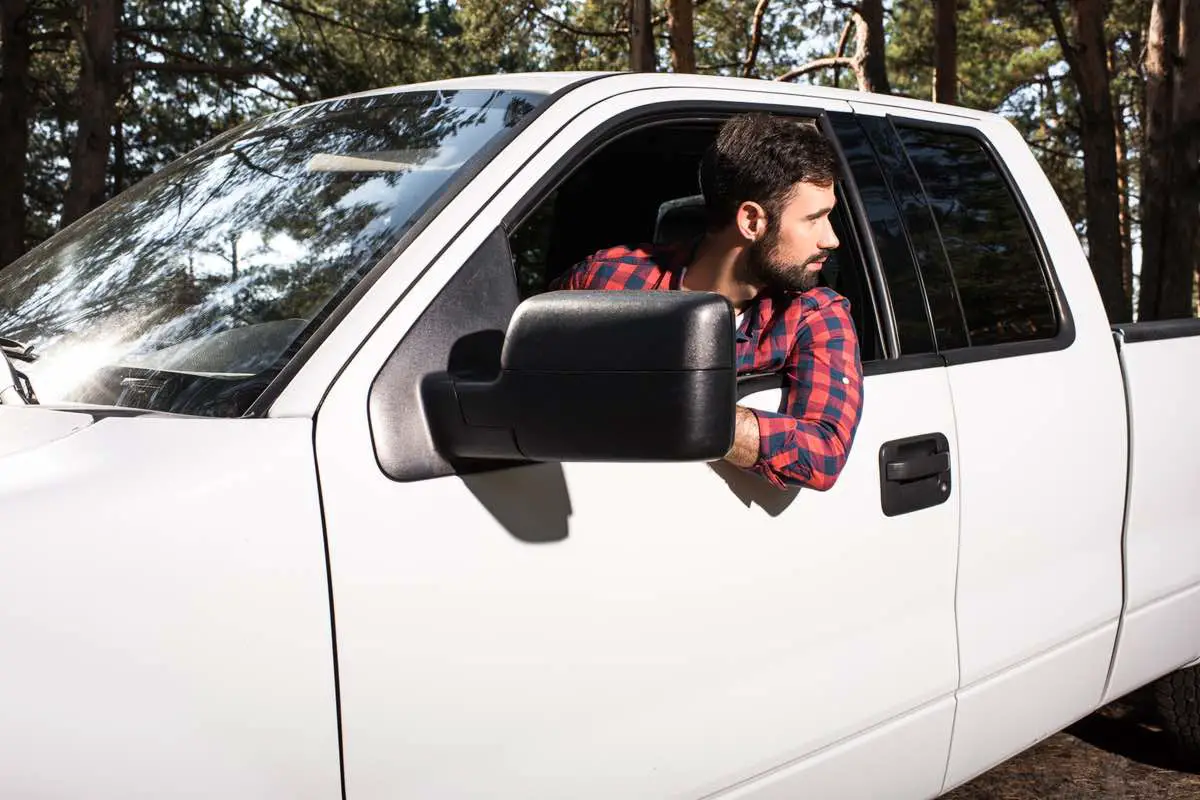Off-roading carries a significant risk of getting stuck, breakdowns, and other undesirable outcomes. Four Wheel Drive (4WD) drive trucks are undoubtedly the most reliable in these conditions, but things aren’t that clear when it comes to other drivetrains like Rear-Wheel Drive (RWD). So, can a rear-wheel drive truck handle the unforgiving off-road?
Rear-wheel drive trucks can go off-road. It’s more likely to get stuck with Rear-Wheel Drive than Four Wheel Drive, but the former drivetrain is safe as long as the truck has enough clearance, wheels with adequate grip, and a suspension that can handle rough terrain.
In the rest of this post, I’ll explain why you are more likely to get stuck in a rear-wheel drive truck than a four-wheel drive truck. I’ll also share a few preventative measures to help you avoid getting stuck and explain when it is okay to take a rear-wheel drive truck off-road.

Why Is a Rear-Wheel Drive Truck More Likely To Get Stuck?
In simple terms, rear-wheel drive trucks do not have the same grip as four-wheel drive vehicles. Rear-wheel drive vehicles rely on only two wheels to perpetuate movement.
As such, a rear-wheel drive truck is more likely to get stuck when off-roading because it only has two points of grip. If the back two wheels are stuck or off the ground, the vehicle will not move even if the front two wheels are on a dry, solid foundation.
Being limited to only two points of grip that can move the truck forwards or backward severely limits the capabilities of rear-wheel drive trucks. The front wheels don’t get any power from the engine to propel the vehicle; they are only for steering.
The benefits are plain to see compared to a four-wheel drive truck. In a four-wheel drive or all-wheel drive, you only need one wheel on the vehicle to have grip. That one wheel can pull the entire car out of any puddle, mudhole, or rut.
Unlike rear-wheel drive trucks, where the rear tires must maintain grip to keep the car moving, a four-wheel drive truck can operate with just one point of grip. This opens it up to many different types of terrain to conquer.
A four-wheel drive truck can go into much more rough terrain than a rear-wheel drive truck without getting stuck. However, that doesn’t mean you can’t take a rear-wheel drive truck off-road if you do some research and prep correctly.
How To Make a Rear Wheel Drive Truck Better for Off-Roading
If you have a rear-wheel drive truck and want to go off-roading, you can follow a few straightforward steps to significantly decrease your odds of getting stuck on a trail in the middle of nowhere.
The first and most important step is to get informed about the area you plan to go off-roading. You do not want to run into any surprises during your trip.
Getting familiar with the route you plan to take involves more than just looking at the area on google maps. You need to note any bodies of water in the area and the elevation along the route you plan to take. Also, pay attention to the weather patterns in the days leading up to your trip.
If you can, go to the area and walk along the route you want to drive. Test any large puddles for depth and feel the consistency of the soil. Being extremely informed about where you plan to go off-roading can be the difference between a successful trip and a horrible one.
In addition to doing extensive research about the area, you can make some modifications to your truck to make it more capable off-road. Some of these modifications are very expensive, but they will widen the variety of terrain your truck can tackle.
Here are a few suggestions:
- New tires. A new set of big tires with plenty of treads will help keep you from getting stuck on the trail. Going off-roading with old bald tires is like asking to get stuck.
- A lift kit: Lifting your truck a few inches will give it more clearance underneath. This will allow it to go through deeper puddles and ruts without scraping the truck’s undercarriage. Lift kits can be expensive, but they are one sure-fire way to boost the abilities of your rear-wheel drive truck.
- An upgraded suspension system: This is another expensive yet highly effective way to adapt your rear-wheel drive truck to handle the great outdoors. An upgraded suspension system will help the truck move more smoothly through rough terrain like large boulders and unexpected deep puddles by conforming to the terrain and keeping the wheels in contact with the ground.
- A winch: A winch is a large motorized device you mount to your vehicle’s front. Should you get stuck, the winch has a metal cable that you can run to an anchor point (such as a tree), hook it up, and activate the motor to reel your vehicle out.
What Are the Best Conditions for Rear-Wheel Drive Truck Off-Roading?
The best conditions for taking a rear-wheel drive truck off-road are preferably dry, reasonably flat, and not too bumpy. A rear-wheel drive truck will struggle to climb steep inclines in wet conditions or on very bumpy trails.
You should only take rear-wheel drive trucks onto mild terrain. Anything too rough exposes you to a great risk of getting stuck. This is not as bad if you have a winch. If you get stuck in an area with no phone service and don’t have a winch, you’ll have to hike down.
This is why it is important to research the area you plan to drive through. Then you can come prepared with the correct equipment when you begin your adventure. Preparedness is the key to a successful off-roading trip.

Conclusion
You can take your rear-wheel drive truck off-road and be safe and not get stuck. As long as you know the area well, plan your trip for a time when the weather conditions are ideal. You should still practice cautious driving when on the trail.
You can also modify your rear-wheel drive truck to improve its off-road capabilities. These modifications are expensive and may require professional installation, but they greatly decrease your odds of getting stuck.
